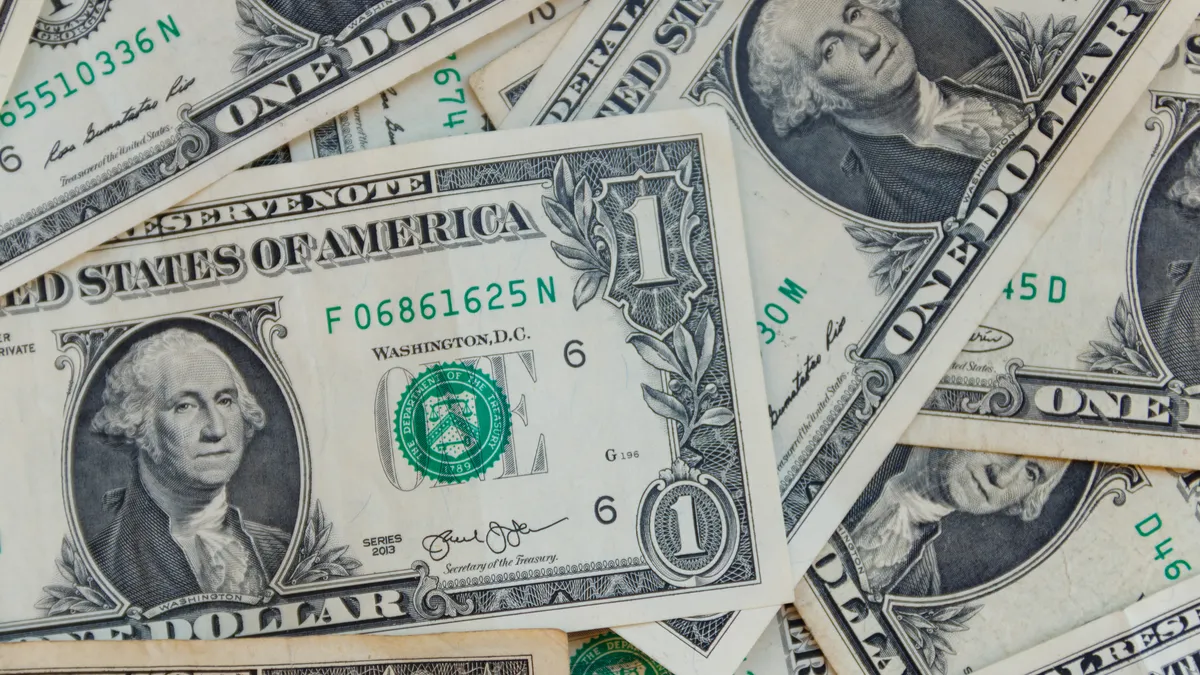Dive Brief:
- Borrowing costs will probably remain elevated longer than expected just a few weeks ago as the Federal Reserve seeks to curb inflation to its 2% target amid robust hiring and steady economic growth, Fannie Mae said Tuesday.
- “Interest rates existing in a ‘higher for longer’ state seems to be an increasingly real possibility in the eyes of market participants,” Hamilton Fout, a Fannie Mae vice president for economic and strategic research, said in a report that flagged “strong economic data and hot inflation” during the first quarter.
- The consumer price index this year will probably increase 3.1%, Fannie Mae said, raising its prior forecast from 2.5%. Gross domestic product in 2024 will probably expand 1.9%, or 0.1 percentage more than previously estimated.
Dive Insight:
With inflation so far this year exceeding expectations, economists have marked down their estimates for the number of quarter-point cuts to the Fed’s main interest rate from as many as six to one or two.
For example, Bank of America Securities has moved its forecast for the central bank’s first reduction in borrowing costs to December from June, and trimmed its projected number of cuts from three to just one. The federal funds rate is currently at a range between 5.25% and 5.5%, the highest level in 23 years.
The Fed will stop easing the main interest rate at a range between 3.5% and 3.75%, or 0.50 percentage point higher than a prior forecast, as inflation persists above the central bank’s target, Bank of America said in a report on Friday.
“Several Fed speakers have spoken since the March CPI report, including Chair [Jerome] Powell,” Bank of America said. “Almost all have echoed the same message — the Fed is not ready to start its cutting cycle.”
The bond market illustrates the shift to higher rate expectations, with the benchmark 10-year Treasury note yielding 4.6% on Tuesday compared with 4.1% on March 11.
Fannie Mae expects that, as inflation slows and the economy cools, the 10-year Treasury note yield will finish this year at an annual average of 4.1%.
Indeed, the economy — although growing — is showing signs of losing momentum at the start of Q2, according to S&P Global’s Flash Composite PMI released on Tuesday.
Output this month slowed to the lowest level since December as orders in manufacturing and services declined for the first time in six months, S&P Global said. Business confidence flagged to the lowest level since November.
“The US economic upturn lost momentum at the start of the second quarter, with the flash PMI survey respondents reporting below-trend business activity growth in April,” Chris Williamson, chief business economist at S&P Global Market Intelligence, said in a statement.
“Further pace may be lost in the coming months, as April saw inflows of new business fall for the first time in six months and firms’ future output expectations slipped to a five-month low amid heightened concern about the outlook,” he said.












